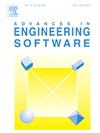基于yolov10改进的轻型多尺度特征融合道路缺陷检测模型及其应用
IF 5.7
2区 工程技术
Q2 COMPUTER SCIENCE, INTERDISCIPLINARY APPLICATIONS
引用次数: 0
摘要
智能道路损伤检测对于确保交通安全和延长道路寿命至关重要。然而,在复杂的检测场景和资源受限的环境中,现有的方法难以平衡高精度和实时性。为了解决这一问题,本研究提出了一种基于改进的YOLOv10-GAS-YOLO的轻量级多尺度特征融合模型。该模型采用了一种新型的轻量级架构(GSF-ST),通过结合特征生成、非对称卷积和分组信道变换优化策略设计,显著降低了计算复杂度和参数数量,同时增强了全局和局部特征表示。为了提高多尺度损伤检测性能,GAS-YOLO结合了改进的双向特征金字塔网络(BiFPN)和Swin Transformer模块。分辨率减半和信道加倍策略提高了小目标的检测能力。此外,WiOU损失函数进一步优化了边界盒回归的精度,减轻了样本不平衡带来的误差。通道修剪技术用于实现模型的二次轻量级压缩,从而显著节省资源。通过与几种先进的损伤检测模型的对比实验和烧蚀分析,本研究证明了GAS-YOLO的性能有显著提高。实验结果表明,GAS-YOLO在多尺度损伤检测任务中表现优异,参数为5.6 M,计算复杂度为4.4 gflops,模型大小仅为5.8 MB,检测精度比基线模型提高10.8%,计算复杂度降低2.57倍,参数数量减少1.29倍,平均检测精度达到86.5%,单幅图像处理时间为6.1 ms。通过对公共数据集和自构建数据集的验证,进一步证明了该方法在保持较高精度的同时具有实时性。本研究提出的GAS-YOLO模型不仅为资源受限环境下的道路损伤检测提供了切实可行的解决方案,也为智能交通和城市基础设施的智能管理提供了新的见解,具有广阔的应用前景。本文章由计算机程序翻译,如有差异,请以英文原文为准。
An improved YOLOv10-based lightweight multi-scale feature fusion model for road defect detection and its applications
Intelligent road damage detection is critical for ensuring traffic safety and extending the lifespan of roads. However, existing methods struggle to balance high accuracy and real-time performance in complex detection scenarios and resource-constrained environments. To address this issue, this study proposes a lightweight multi-scale feature fusion model based on an improved YOLOv10—GAS-YOLO. The model utilizes a novel lightweight architecture (GSF-ST) designed through a combination of feature generation, asymmetric convolution, and grouped channel shuffling optimization strategies, significantly reducing computational complexity and parameter count while enhancing both global and local feature representation. To improve multi-scale damage detection performance, GAS-YOLO incorporates an improved bidirectional feature pyramid network (BiFPN) and Swin Transformer module. A resolution halving and channel doubling strategy enhances the detection ability of small targets. Moreover, the WiOU loss function further optimizes bounding box regression accuracy, mitigating errors caused by sample imbalance. Channel pruning techniques are applied to achieve secondary lightweight compression of the model, resulting in significant resource savings. Through comparative experiments and ablation analysis with several advanced damage detection models, this study demonstrates a significant performance improvement of GAS-YOLO. Experimental results show that GAS-YOLO exhibits outstanding performance in multi-scale damage detection tasks, with 5.6 M parameters, 8.4GFLOPs of computational complexity, and a model size of only 5.8 MB. Compared to baseline models, detection accuracy improves by 10.8 %, computational complexity is reduced by 2.57 times, and parameter count is reduced by 1.29 times, with an average detection accuracy of 86.5 % and a single image processing time of 6.1 ms. Validation on both public datasets and self-constructed datasets further proves its real-time processing capability while maintaining high accuracy. The GAS-YOLO model proposed in this study not only provides a practical solution for road damage detection in resource-constrained environments but also offers new insights for intelligent management of intelligent transportation and urban infrastructure, with broad application prospects.
求助全文
通过发布文献求助,成功后即可免费获取论文全文。
去求助
来源期刊

Advances in Engineering Software
工程技术-计算机:跨学科应用
CiteScore
7.70
自引率
4.20%
发文量
169
审稿时长
37 days
期刊介绍:
The objective of this journal is to communicate recent and projected advances in computer-based engineering techniques. The fields covered include mechanical, aerospace, civil and environmental engineering, with an emphasis on research and development leading to practical problem-solving.
The scope of the journal includes:
• Innovative computational strategies and numerical algorithms for large-scale engineering problems
• Analysis and simulation techniques and systems
• Model and mesh generation
• Control of the accuracy, stability and efficiency of computational process
• Exploitation of new computing environments (eg distributed hetergeneous and collaborative computing)
• Advanced visualization techniques, virtual environments and prototyping
• Applications of AI, knowledge-based systems, computational intelligence, including fuzzy logic, neural networks and evolutionary computations
• Application of object-oriented technology to engineering problems
• Intelligent human computer interfaces
• Design automation, multidisciplinary design and optimization
• CAD, CAE and integrated process and product development systems
• Quality and reliability.
 求助内容:
求助内容: 应助结果提醒方式:
应助结果提醒方式:


